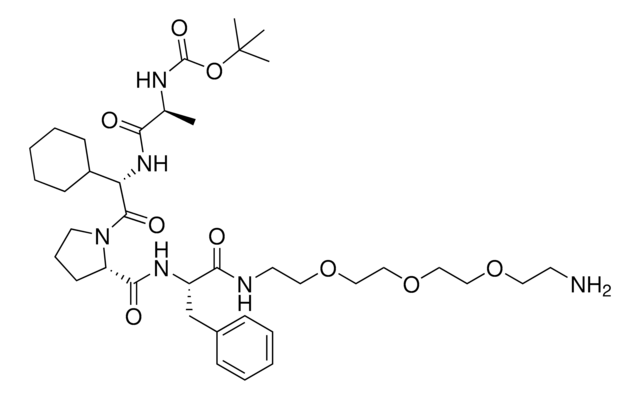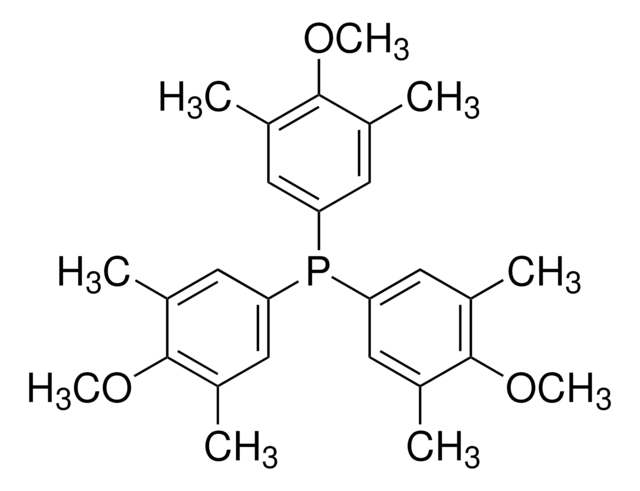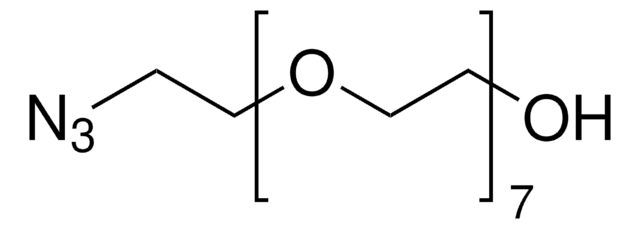916692
BocA1V2PF2-NHPEG3-NH2
≥95%
Synonym(s):
tert-Butyl ((S)-1-(((S)-2-((S)-2-(((S)-1-amino-15-(4-fluorophenyl)-13-oxo-3,6,9-trioxa-12-azapentadecan-14-yl)carbamoyl)pyrrolidin-1-yl)-1-cyclohexyl-2-oxoethyl)amino)-1-oxopropan-2-yl)carbamate, AVP conjugate for IAP-mediated protein degrader development, SNIPER building block
About This Item
Recommended Products
ligand
BocA1V2PF2
Quality Level
Assay
≥95%
form
powder
reaction suitability
reactivity: carboxyl reactive
reagent type: ligand-linker conjugate
functional group
amine
storage temp.
2-8°C
SMILES string
C[C@H](NC(OC(C)(C)C)=O)C(N[C@H](C(N1CCC[C@H]1C(N[C@H](C(NCCOCCOCCOCCN)=O)CC2=CC=C(C=C2)F)=O)=O)C3CCCCC3)=O
Related Categories
Application
Building blocks in this series:
917974 BocA1V2PF2
917443 BocA1V2PF2-NHC6-NH2
917699 BocA1V2PF2-NHC10-NH2
917958 BocA1V2PF2-NHPEG1-NH2
916692BocA1V2PF2-NHPEG3-NH2
Technology Spotlight: Degrader Building Blocks with Inhibitor of Apoptosis Protein (IAP) In Silico-Derived Ligands
Other Notes
Legal Information
related product
Storage Class Code
11 - Combustible Solids
WGK
WGK 3
Flash Point(F)
Not applicable
Flash Point(C)
Not applicable
Certificates of Analysis (COA)
Search for Certificates of Analysis (COA) by entering the products Lot/Batch Number. Lot and Batch Numbers can be found on a product’s label following the words ‘Lot’ or ‘Batch’.
Already Own This Product?
Find documentation for the products that you have recently purchased in the Document Library.
Our team of scientists has experience in all areas of research including Life Science, Material Science, Chemical Synthesis, Chromatography, Analytical and many others.
Contact Technical Service![[Pd(IPr#)(cin)Cl]](/deepweb/assets/sigmaaldrich/product/structures/391/578/9bb7eaef-fa70-4f50-8644-2c55cec3925d/640/9bb7eaef-fa70-4f50-8644-2c55cec3925d.png)






![[CF3]8-DPPF ≥95%](/deepweb/assets/sigmaaldrich/product/structures/184/440/99bf7044-3b37-4b87-8088-d8d25cfc438f/640/99bf7044-3b37-4b87-8088-d8d25cfc438f.png)

